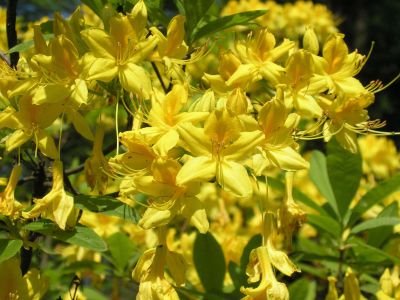What are Honeysuckle Azalea Plants?
Honeysuckle azalea (Rhododendron luteum), also known commonly as pontic azalea, is native to Eastern Europe, this deciduous flowering shrub has become popular in the U.S. in zones 6-9. Its cheerful flowers attract bees, butterflies, and hummingbirds. It is known as honeysuckle azalea because the shrub produces pretty, yellow flowers that give off a sweet, delicious scent – akin to that of honeysuckles. Plant this azalea near a patio or porch to enjoy the smell. It also does well as a privacy screen or hedge. Honeysuckle azalea grows 4 to 5 feet (1 to 1.5 m.) tall and just about as wide. Blooming in spring, these shrubs produce clusters of bright yellow flowers that are about two inches (5 cm.) wide. The leaves turn lovely shades of yellow, orange, and red in the fall.
How to Grow Honeysuckle Azalea
With the right conditions and environment, honeysuckle azalea care isn’t difficult. These shrubs prefer some shade. Full sun can scorch the leaves, but they will tolerate day-long sunlight if you keep the soil moist and cool with regular watering and good mulch. Choose a spot that has some protection from the coldest winter winds. The soil must drain well. Although this type of azalea prefers moister soil, it can’t tolerate standing water. The soil should also be a little bit acidic, so modify, if necessary, before planting. Leaf mold is a good choice of mulch, as the shrubs like soil rich in humus. Aside from keeping the soil moist and mulch intact, there is little you need to do to care for your honeysuckle azalea. You can remove spent flowers if you choose. This isn’t necessary but will encourage new blooms to develop.
